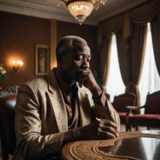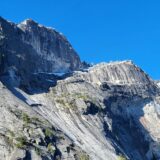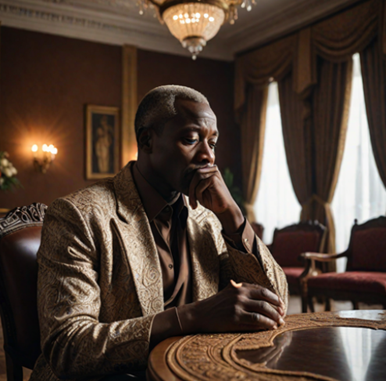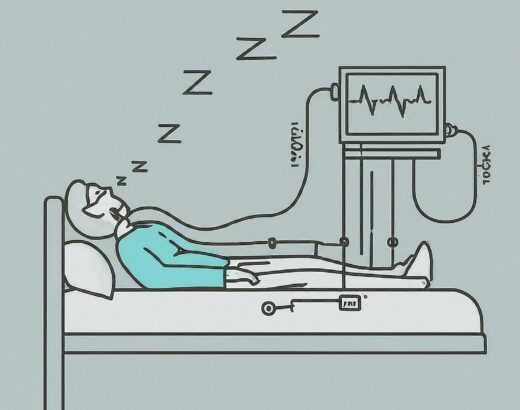We don’t want no Yankee Bases

Please kindly leave your comments and feedback in the comment box below when you read this piece. Also, pardon the typos and grammatical errors, if any. I was juggling writing, driving and observing, all at the same time as we travel. Full editing will be done later.
By Australian standards, the drive from Coral Bay to Exmouth was nothing. It was a leisurely one that took us back to the junction on the road where we had turned off to Coral Bay the previous day and less than two hours later we arrived at Exmouth.
Coral Bay and Exmouth are situated in the North West Cape peninsula. Here the Cape Range (mountain) runs down the spine of the peninsula and Ningaloo Reef runs along the western edge. This is the only place in Australia where one can have the range to reef experience. The beauty of this area lies in its diversity – caves, gorges and pristine beaches all within reach. The Ningaloo Reef, though not as popular as her sister on the eastern shore of the continent, the Great Barrier Reef, is a World Heritage listed site and lays claim to being the world’s largest fringing reef. Turtles, Manta Rays, Humphback Whales and tropical fishes abound here and the beaches provide wonderful experiences for snorkelers to interact with these animals within the protected marine parks.
There is only one way into the Exmouth area, through the Milniya-Exmouth Road, itself a diversion from the North West Coastal Highway. From the diversion point to the Coral Bay exit is 78kms on solid well tarred road, something the Australians refer to as bitumen road. It had taken us another 12kms into Coral Bay the previous day and we have done the same 12kms back to the junction today, turning right. From here to Exmouth is 134kms through a landscape of nothingness apart from the occasional termite hills and low lying shrub vegetation. The notable views on the way are the Learmonth Airport and Solar Observatory, both offshoots of the Americans forays into this area. Just after the Airport is the Royal Australian Air Force base with a heap of camouflaged sandbags within its vicinity. The sight of this made reminded me of the period of military rule in Nigeria, the sights of soldiers and sandbags as permanent features at the entrances of national institutions like the Voice of Nigeria in Ikoyi and others. This is the first time that I am coming across this in Australia and I was so desirous to ask – Is there a war going on in this vicinity?

As we made to enter Exmouth, we came across a unique notice, probably the only one of its kind in Australia. It is a notice alerting us of a danger of explosion and not to take Electrical Detonators past the point. To the queer and curious, something strange is ongoing in this town. Conspiracy theorists will have so much to fill their imaginations with. Starting with the Learmonth Solar Observatory, one will be justified to ask why a solar observatory and why here? In addition, what is so secret that visits to the observatory are restricted? Now, add to it this strange notice about explosive detonating on their own, if carried into this region. Yet more was to
come, the VLF masts.
Arriving the town, one can see from a distance strange free standing tall structure in the middle of nowhere. These are the 13 Very Low Frequency (VLF) masts scattered in the horizon with no apparent order to the observer. However, there is. They are actually ordered in two sets of concentric circles of 6 masts around a base tower, tower zero, the tallest of the mast. It is reputed that Tower zero, standing at 389 metres, was for many years the tallest structure in the southern hemisphere. Even now, it stands taller than the Sydney and Eifell Towers and the Empire State Building.
For people of my generation, born much after the second world war, we continue to pick up pieces of information about the war as we grow. Our History lesson in school was much about Africa and West Africa. Brief mentions about the war might have been made but not much in a way to have caught my interest. My first awareness that there was a war was through passing by the unknown Soldier statute that is at the Orita-Meta (Intersection of three roads) of Lebanon Road, Iya Olobe and Bank Road in Ibadan. Exmouth offered another opportunity to fill in some void in my understanding of the war and its fall out. After all, this city came to be. A big welcome sign was at the edge of town and it offers a wonderful picture opportunity to tourists. Just as we stopped, another vehicle occupied by four older men stopped as well. We talked one of the men to take our picture and that was when we came to understand that not everyone is in tune with today’s technology of point and shoot cameras, the man succeeded in only taking a picture of himself thrice.

Moving further ahead, is a cute estate that is developing on the left hand of the road. Each house in the estate has a water front where boats can be anchored. The ingenuity of the developer was really commendable here in dredging canals to bring water to each house. It was love at first sight, we fell in love with the estate. However, the reality of cyclones in this area quickly wiped the love out of our heart. One needs to have deep pockets to pay the insurance companies for houses owned in this region.
Having confirmed our lodging for the night, we took a drive to explore the city. We had some good sunlight hours at hand and had only taken a few hours on the road, so we weren’t tired for the day. We continued northwards towards the cape on the Milniya-Exmouth Road and just as we were getting out of the town limits of Exmouth, we started noticing series of warnings asking people to keep off the lands on both sides of the road. They are from the Australian Department of Defence. A little further ahead, we came across an exhibit about the Naval Communication Station on our left. The main structure is a shining black simple model of a submarine with an accompanying giant whiteboard detailing the story of the station.
Just as we made to pull off from the road to visit this exhibit, an Emu came from the other side of the road and walked leisurely, with some gaiety, across the road in front of us to the exhibit side. The Emu is a bird native to Australia. This is protected territory and she could afford to take all the time she wanted. Time was not an issue to this bird and her manner suggests she was completely oblivious to all the other goings on around her.
It was from this exhibit that we started putting together little pieces of information that helped us to understand the significance of the 13 Very Low Frequency (VLF) masts that stand tall above the skyline of Exmouth. These masts call to the deep. As the US and USSR faced off like gladiators during the cold war and following the Cuban Missile Crisis, there was an urgent need by Uncle Sam. While it had a robust fleet of nuclear-powered and armed submarines, there was a giant gap in his communication network, a sort of black spot areas where the submarines cannot be contacted. He needed to fix this and found the North West Cape as the perfect location for siting a communication station. Following agreements in 1963 with the Australian government, the US began the construction of the extraordinary array of 13 sky-scraping towers and over a 4 year period completed it along with the development of Exmouth as a brand new town to support the living needs of its military officers and families stationed here.
With this, the far reaches of the American state established a foothold on Australian soil. It probably would have helped if Uncle Sam would bestow some confidence in his host nation, he didn’t. Everything done on the base was held secret from the participation of Australian Marine crew. With this, there was an outcry. One in which Uncle Sam agreed that the deputy commandant of the base can be Australian but not with access rights to all the areas on the base. Australians could be egregious, they won’t let this affront go unconfronted. So in May 1974 several hundred people travelled to North West Cape from around Australia to protest and occupy the base and “symbolically reclaim the site for the Australian people”.
Ironic isn’t it? The same Australians that have considered much of this occupied land as terra nullius would not allow Uncle Sam as much as a foothold on it! During the protest, one of the songs composed and sung was the folkloric “we don’t want no Yankee Bases”. The US has since withdrawn its personnel from the base and command and control handed over to Australians.
Why is the station named after Harold E. Holt? That is another topic entirely, one that brings up that gets the conspiracy theorists up again. Harold was the Prime Minister of Australia till December 1967. That heads of states die in office is not strange. Gnassingbe Eyadema, Shehu Yar’Adua, Samora Machel are some names that readily come to mind but that of Harold Holt trounced them all. He is presumed dead. But can one say someone is dead without a body? Harold went swimming off Portsea in Victoria and then was no more. Just like that, he disappeared into thin air. Tales abound as to what might have happened to him and conspiracy theorist, some, still believe he is either in the Bahamas living an opulent lifestyle or was kidnapped by a Soviet Era submarine and is cooling off somewhere in Russia today. Whatever one believes, lets hold on to it.
We continued onwards to Bundegi beach. As we alighted from the Explorer, we met a couple of men filleting their catch of the day. Red Snapper, Barramunda and the lot. Not a big catch, when measured in terms of the investment and efforts that had been put into this. The big boat with dual motors, parked on a trailer nearby, shows they had forayed into the deep sea for their catch. We talked with them and were informed that they had been on the water all night. I wandered whether their catch would have been different if Jesus had appeared to them and instructed them on where to lay their nets. Leaving them, we walked the short distance to reach the sandy shore of the beach. A family was close by, watching their father having a dip in the ocean. A few metres from where we stood were recreational boats and people playing on the water.
As hunger sets in, we made our way back to the city centre and took a seat at the Froth’s, a restaurant and bar that prides itself in its craft beer. The atmosphere was boisterous and we got to meet some folks we had earlier spent some time with at Coral Bay. The décor in the bar is all about beer. The bar’s name is inscribed on beer kegs hanging on a rope on one side of the building, even the receptacles in the toilet are made out of beer kegs. Froth’s is all about the beer experience, even the soup of the day is beer. Nearly everyone in the bar, ordered one of the many varieties of craft beers and the chilled beer mugs on the table bear ample testimony to this. They must have been a refreshing, given the warm temperature outside. We were the exception, the odd fella. It showed in the way the attendant looked at us as we placed in our order. She must have thought we considered their craft beer not good enough for our African taste. This may be true for many Nigerians who have told me that there is no beer drink in the world comparable to Star Lager and I have had a few foreigners attested to this as well.
When our order arrived, the sight of the seemingly dry and brownish colour of the chicken sandwiched in my burger was not encouraging. Well, with hunger, I had not much of a choice than to take a bite. The taste was heavenly, especially having spiced it with Spiracha and Tomato Ketchup. I guess the saying that the taste of the pudding is in the eating, holds true here.
The resort was almost full to the brim, all the rooms were fully booked, the few spaces left were on the camp lawns. Our room was a great departure from how we spent the previous night at Coral Bay in a swag. Very neat airconditioned room, fresh white bedsheets, supple pillows and privacy curtain all made for a nice afternoon rest. Dinner was BBQ pork and beef, made on the grill and kitchen facilities provided at the centre of the camp. It was a very busy area, especially made so by the presence of the Fremantle Ulysses Bikers Team. This group, numbering in excess of ten, had ridden all the way to Exmouth from Perth covering more than 1,200 kms within 3 days and returning the same way.
A friend of mine, much more advanced in years, had told me a couple of months earlier that he has taken to riding a motorbike. I considered the idea crazy, of course I was judging from the experience of Okada riders in the clime where I grew up. The nearly predictable crashes, often arising between the bike riders and motor vehicles always resulted in broken bones and a bed space in the Orthopaedic Hospital in Lagos.
As I sat at the camp kitchen, I engaged in conversation with one of the bikers here, Simon. He is in his mid-seventy. When he told me about the motto of the club as being “grow old disgracefully“, I couldn’t help myself from laughing out loud. He then told me that he had been a member of the club for more than a decade but just recently returned back to riding. He had an accident, a stupid one at that in his views, somewhere down south and had a tree branch wedged in his ass. A medivac helicopter had to fly him from the accident spot to the hospital in Perth where he spent several days recovering. The scar left from this incident has earned him the nickname – two ass! He was such a jovial guy, his joviality being helped by the constant drowning of alcohol.












